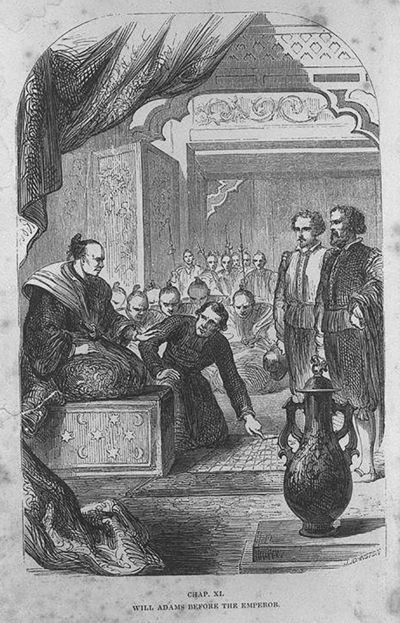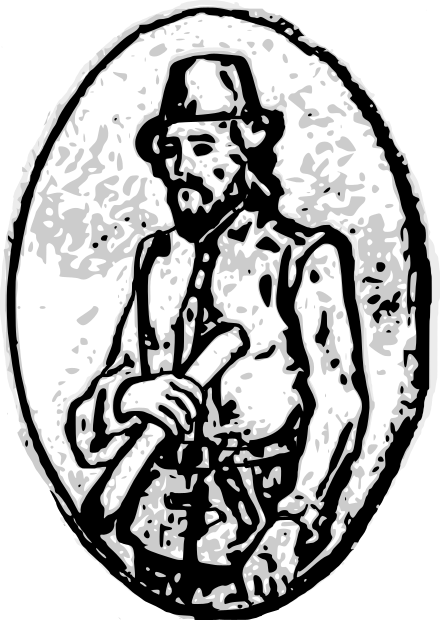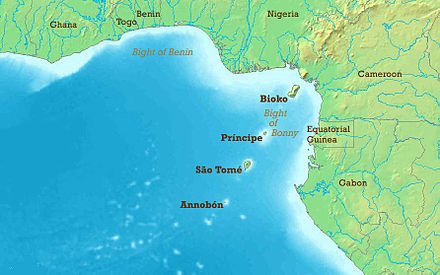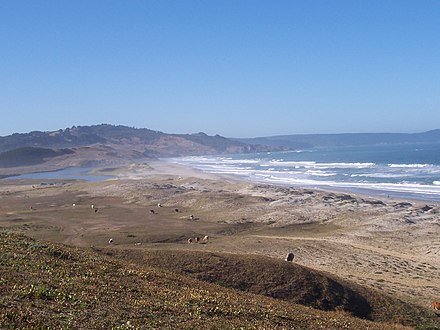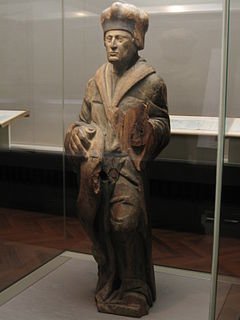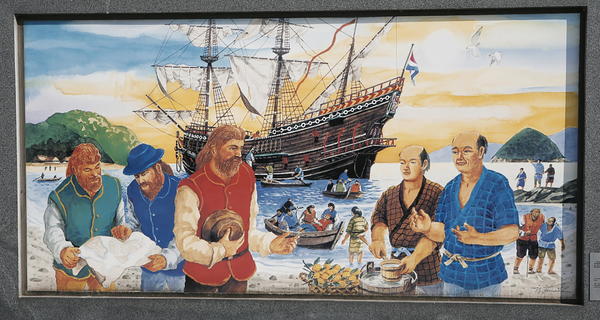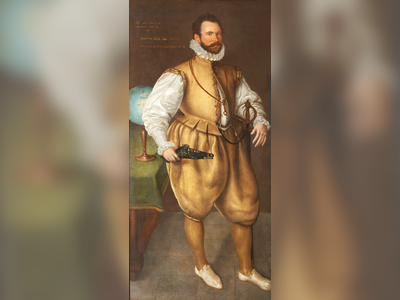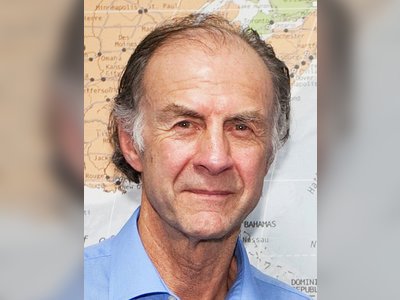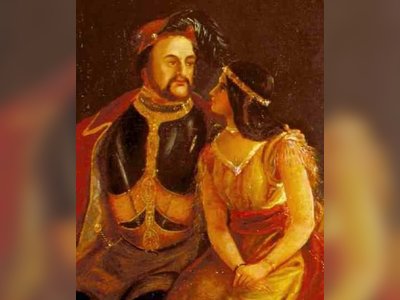William Adams - Advisor to the Shogun
***TOO LONG***William Adams (1564–1620), known in Japanese as Miura Anjin ("the pilot of Miura"), was an English navigator who, in 1600, was the first Englishman to reach Japan, leading a five-ship expedition for a private Dutch fleet. Of the few survivors of the only ship that reached Japan, Adams and his second mate Jan Joosten were not allowed to leave the country while two of the crew were permitted to go back to the Dutch Republic to invite them to trade. Adams, along with Joosten, then settled in Japan, and the two became some of the first (of very few) Western samurai. Soon his arrival, he became a key advisor to the shōgun Tokugawa Ieyasu. He directed construction of the first Western-style ships in the country and was later key to Japan's approving trading factories from the Netherlands and England. He was highly involved in Japan's Red Seal Asian trade, captaining four expeditions to Southeast Asia. He died in Japan at age 55, one of the most influential of the very few foreigners in Japan during this period.
William Adams (Japanese: ウィリアム・アダムス, Hepburn: Wiriamu Adamusu) (24 September 1564 – 16 May 1620), known in Japanese as Miura Anjin (Japanese: 三浦按針, "the pilot of Miura"), was an English navigator who, in 1600, was the first Englishman to reach Japan, leading a five-ship expedition for a private Dutch fleet. Of the few survivors of the only ship that reached Japan, Adams and his second mate Jan Joosten were not allowed to leave the country while Jacob Quaeckernaeck and Melchior van Santvoort were permitted to go back to the Dutch Republic to invite them to trade.
Adams, along with former second mate Joosten, then settled in Japan, and the two became some of the first (of very few) Western samurai.
Soon after Adams' arrival in Japan, he became a key advisor to the shōgun Tokugawa Ieyasu. Adams directed construction for the shōgun of the first Western-style ships in the country. He was later key to Japan's approving the establishment of trading factories by the Netherlands and England. He was also highly involved in Japan's Red Seal Asian trade, chartering and serving as captain of four expeditions to Southeast Asia. He died in Japan at age 55. He has been recognised as one of the most influential foreigners in Japan during this period.
Early life
Adams was born in Gillingham, Kent, England. When Adams was twelve his father died, and he was apprenticed to shipyard owner Master Nicholas Diggins at Limehouse for the seafaring life. He spent the next twelve years learning shipbuilding,astronomy, and navigation before entering the Royal Navy.
With England at war with Spain, Adams served in the Royal Navy under Sir Francis Drake. He saw naval service against the Spanish Armada in 1588 as master of the Richarde Dyffylde, a resupply ship. Adams was recorded to have married Mary Hyn in the parish church of St Dunstan's, Stepney on 20 August 1589 and they had two children: a son John and a daughter named Deliverance. Soon after, Adams became a pilot for the Barbary Company. During this service, Jesuit sources claim he took part in an expedition to the Arctic that lasted about two years, in search of a Northeast Passage along the coast of Siberia to the Far East. The veracity of this claim is somewhat suspect, because he never referred to such an expedition in his autobiographical letter written from Japan; its wording implies that the 1598 voyage was his first involvement with the Dutch. The Jesuit source may have misattributed to Adams a claim by one of the Dutch members of Mahu's crew who had been on Rijp's ship during the voyage that discovered Spitsbergen.
..I am a Kentish-man, borne in a Towne called Gillingam, two English miles from Rochester, one mile from Chattam, where the Kings ships lye : and that from the age of twelve yeares, I was brought up in Lime-house neere London, being Prentise twelve yeares to one Master Nicholas Diggines, and have served in the place of Master and Pilot in her Majesties ships, and about eleven or twelve yeares served the Worshipfull Company of the Barbarie Marchants, untill the Indian Trafficke from Holland began, in which Indian Trafficke I was desirous to make a little experience of the small knowledge which God had given me. So, in the yeare of our Lord God, 1598. I was hired for chiefe Pilot of a Fleete of five sayle, which was made readie by the chiefe of the Indian Company Peter Vanderhag, and Hance Vanderueke...
Attracted by the Dutch trade with India, Adams, then 34 years old, shipped as pilot major with a five-ship fleet dispatched from the isle of Texel to the Far East in 1598 by a company of Rotterdam merchants (a voorcompagnie, predecessor of the Dutch East India Company). His brother Thomas accompanied him. The Dutch were allied with England and as well as fellow Protestants, they too were also at war with Spain fighting for their independence.
The Adams brothers set sail from Texel on the Hoope and joined with the rest of the fleet on 24 June. The fleet consisted of:
Jacques Mahu and Simon de Cordes were the leaders of an expedition with the goal to achieve the Chile, Peru and other kingdoms (in New Spain like Nueva Galicia; Captaincy General of Guatemala; Nueva Vizcaya; New Kingdom of León and Santa Fe de Nuevo México). The fleet's original mission was to sail for the west coast of South America, where they would sell their cargo for silver, and to head for Japan only if the first mission failed. In that case, they were supposed to obtain silver in Japan and to buy spices in the Moluccas, before heading back to Europe. Their goal was to sail through the Strait of Magellan to get to their destiny, which scared many sailors because of the harsh weather conditions. The first major expedition around South America was organized by a voorcompagnie, the Rotterdam or Magelhaen Company. It organized two fleets of five and four ships with 750 sailors and soldiers, including 30 English musicians.
After leaving Goeree on 27 June 1598 the ships sailed to the Channel, but anchored in the Downs till mid July. When the ships approached the shores of North Africa Simon de Cordes realized he had been far too generous in the early weeks of the voyage and instituted a 'bread policy'. At the end of August they landed on Santiago, Cape Verde and Mayo off the coast of Africa because of a lack of water and need for fresh fruit. They stayed around three weeks in the hope to buy some goats. Near Praia they succeeded to occupy a Portuguese castle on the top of a hill, but came back without anything substantial. At Brava, Cape Verde half of the crew of the "Hope" caught fever there, with most of the men sick, among them Admiral Jacques Mahu. After his death the leadership of the expedition was taken over by Simon de Cordes, with Van Beuningen as vice admiral. Because of contrary wind the fleet was blown off course (NE in the opposite direction) and arrived at Cape Lopez, Gabon, Central Africa. An outbreak of scurvy forced a landing on Annobón, on 9 December. Several men became sick because of dysentery. They stormed the island only to find that the Portuguese and their native allies had set fire to their own houses and fled into the hills. They put all the sick ashore to recover and left early January. Because of starvation the men fell into great weakness; some tried to eat leather. On 10 March 1599 they reached the Rio de la Plata, in Argentina. Early April they arrived at the Strait, 570 km long, 2 km wide at its narrowest point, with an inaccurate chart of the seabed. The wind turned out to be unfavorable and this remained so for the next four months. Under freezing temperatures and poor visibility they caught penguins, seals, mussels, duck and fish. About two hundred crew members died. On 23 August the weather improved.
When finally the Pacific Ocean was reached on 3 September 1599, the ships were caught in a storm and lost sight of each other. The "Loyalty" and the "Believe" were driven back in the strait. After more than a year each ship went its own way. The Geloof returned to Rotterdam in July 1600 with 36 men surviving of the original 109 crew.) De Cordes ordered his small fleet to wait four weeks for each other on Santa María Island, Chile, but some ships missed the island. Adams wrote "they brought us sheep and potatoes". From here the story becomes less reliable because of a lack of sources and changes in command. In early November, the "Hope" landed on Mocha Island where 27 people were killed by the people from Araucania, including Simon de Cordes. (In the account given to Olivier van Noort it was said that Simon der Cordes was slain at the Punta de Lavapie, but Adams gives Mocha Island as the scene of his death.) The "Love" hit the island, but went on to Punta de Lavapié near Concepción, Chile. A Spanish captain supplied the "Loyalty" and "Hope" with food; the Dutch helped him against the Araucans, who had killed 23 Dutch, including Thomas Adams (according to his brother in his second letter) and Gerrit van Beuningen, who was replaced by Jacob Quaeckernaeck.
During the voyage, before December 1598, Adams changed ships to the Liefde (originally named Erasmus and adorned by a wooden carving of Erasmus on her stern). The statue was preserved in the Ryuko-in Buddhist temple in Sano City, Tochigi-ken and moved to the Tokyo National Museum in the 1920s. The Trouw reached Tidore (Eastern Indonesia). The crew were killed by the Portuguese in January 1601.
In fear of the Spaniards, the remaining crews determined to leave the island and sail across the Pacific. It was 27 November 1599 when the two ships sailed westward for Japan. On their way, the two ships made landfall in "certain islands" where eight sailors deserted the ships. Later during the voyage, a typhoon claimed the Hope with all hands, in late February 1600.
In April 1600, after more than nineteen months at sea, a crew of twenty-three sick and dying men (out of the 100 who started the voyage) brought the Liefde to anchor off the island of Kyūshū, Japan. Its cargo consisted of eleven chests of trade goods: coarse woolen cloth, glass beads, mirrors, and spectacles; and metal tools and weapons: nails, iron, hammers, nineteen bronze cannon; 5,000 cannonballs; 500 muskets, 300 chain-shot, and three chests filled with coats of mail.
When the nine surviving crew members were strong enough to stand, they made landfall on 19 April off Bungo (present-day Usuki, Ōita Prefecture). They were met by Japanese locals and Portuguese Jesuit missionary priests claiming that Adams' ship was a pirate vessel and that the crew should be executed as pirates. The ship was seized and the sickly crew were imprisoned at Osaka Castle on orders by Tokugawa Ieyasu, the daimyō of Edo and future shōgun. The nineteen bronze cannon of the Liefde were unloaded and, according to Spanish accounts, later used at the decisive Battle of Sekigahara on 21 October 1600.
Adams met Ieyasu in Osaka three times between May and June 1600. He was questioned by Ieyasu, then a guardian of the young son of the Taikō Toyotomi Hideyoshi, the ruler who had just died. Adams' knowledge of ships, shipbuilding and nautical smattering of mathematics appealed to Ieyasu.
Coming before the king, he viewed me well, and seemed to be wonderfully favourable. He made many signs unto me, some of which I understood, and some I did not. In the end, there came one that could speak Portuguese. By him, the king demanded of me of what land I was, and what moved us to come to his land, being so far off. I showed unto him the name of our country, and that our land had long sought out the East Indies, and desired friendship with all kings and potentates in way of merchandise, having in our land diverse commodities, which these lands had not… Then he asked whether our country had wars? I answered him yea, with the Spaniards and Portugals, being in peace with all other nations. Further, he asked me, in what I did believe? I said, in God, that made heaven and earth. He asked me diverse other questions of things of religions, and many other things: As what way we came to the country. Having a chart of the whole world, I showed him, through the Strait of Magellan. At which he wondered, and thought me to lie. Thus, from one thing to another, I abode with him till mid-night. (from William Adams' letter to his wife)
Adams wrote that Ieyasu denied the Jesuits' request for execution on the ground that:
we as yet had not done to him nor to none of his land any harm or damage; therefore against Reason or Justice to put us to death. If our country had wars the one with the other, that was no cause that he should put us to death; with which they were out of heart that their cruel pretence failed them. For which God be forever praised. (William Adams' letter to his wife)
Ieyasu ordered the crew to sail the Liefde from Bungo to Edo where, rotten and beyond repair, she sank.
Japan's first western-style sailing ships
In 1604, Tokugawa ordered Adams and his companions to help Mukai Shōgen, who was commander-in-chief of the navy of Uraga, to build Japan's first Western-style ship. The sailing ship was built at the harbour of Itō on the east coast of the Izu Peninsula, with carpenters from the harbour supplying the manpower for the construction of an 80-ton vessel. It was used to survey the Japanese coast. The shōgun ordered a larger ship of 120 tons to be built the following year; it was slightly smaller than the Liefde, which was 150 tons. According to Adams, Tokugawa "came aboard to see it, and the sight whereof gave him great content". In 1610, the 120-ton ship (later named San Buena Ventura) was lent to shipwrecked Spanish sailors. They sailed it to New Spain, accompanied by a mission of twenty-two Japanese led by Tanaka Shōsuke.
Following the construction, Tokugawa invited Adams to visit his palace whenever he liked and "that always I must come in his presence."
Other survivors of the Liefde were also rewarded with favours, and were allowed to pursue foreign trade. Most of the survivors left Japan in 1605 with the help of the daimyō of Hirado. Although Adams did not receive permission to leave Japan until 1613, Melchior van Santvoort and Jan Joosten van Lodensteijn engaged in trade between Japan and Southeast Asia and reportedly made a fortune. Both of them were reported by Dutch traders as being in Ayutthaya in early 1613, sailing richly cargoed junks.
In 1609 Adams contacted the interim governor of the Philippines, Rodrigo de Vivero y Aberrucia on behalf of Tokugawa Ieyasu, who wished to establish direct trade contacts with New Spain. Friendly letters were exchanged, officially starting relations between Japan and New Spain. Adams is also recorded as having chartered Red Seal Ships during his later travels to Southeast Asia. (The Ikoku Tokai Goshuinjō has a reference to Miura Anjin receiving a shuinjō, a document bearing a red Shogunal seal authorising the holder to engage in foreign trade, in 1614.)
Samurai status
Taking a liking to Adams, the shōgun appointed him as a diplomatic and trade advisor, bestowing great privileges upon him. Ultimately, Adams became his personal advisor on all things related to Western powers and civilization. After a few years, Adams replaced the Jesuit Padre João Rodrigues as the Shogun's official interpreter. Padre Valentim Carvalho wrote: "After he had learned the language, he had access to Ieyasu and entered the palace at any time"; he also described him as "a great engineer and mathematician".
Adams had a wife Mary Hyn and two children back in England, but Ieyasu forbade the Englishman to leave Japan. He was presented with two swords representing the authority of a Samurai. The Shogun decreed that William Adams the pilot was dead and that Miura Anjin (三浦按針), a samurai, was born. According to the shōgun, this action "freed" Adams to serve the Shogunate permanently, effectively making Adams' wife in England a widow. (Adams managed to send regular support payments to her after 1613 via the English and Dutch companies.) Adams also was given the title of hatamoto (bannerman), a high-prestige position as a direct retainer in the shōgun's court.
Adams was given generous revenues: "For the services that I have done and do daily, being employed in the Emperor's service, the emperor has given me a living" (Letters). He was granted a fief in Hemi (Jpn: 逸見) within the boundaries of present-day Yokosuka City, "with eighty or ninety husbandmen, that be my slaves or servants" (Letters). His estate was valued at 250 koku (a measure of the yearly income of the land in rice, with one koku defined as the quantity of rice sufficient to feed one person for one year). He finally wrote "God hath provided for me after my great misery" (Letters), by which he meant the disaster-ridden voyage that had initially brought him to Japan.
Adams' estate was located next to the harbour of Uraga, the traditional point of entrance to Edo Bay. There he was recorded as dealing with the cargoes of foreign ships. John Saris related that when he visited Edo in 1613, Adams had resale rights for the cargo of a Spanish ship at anchor in Uraga Bay.
It is rumored that William had a child born in Hirado with another Japanese woman.
Adams' position gave him the means to marry Oyuki (お雪), the adopted daughter of Magome Kageyu. He was a highway official who was in charge of a packhorse exchange on one of the grand imperial roads that led out of Edo (roughly present-day Tokyo). Although Magome was important, Oyuki was not of noble birth, nor high social standing. Adams may have married from affection rather than for social reasons. Adams and Oyuki had a son Joseph and a daughter Susanna. Adams was constantly traveling for work. Initially, he tried to organise an expedition in search of the Arctic passage that had eluded him previously.
Adams had a high regard for Japan, its people, and its civilisation:
The people of this Land of Japan are good of nature, courteous above measure, and valiant in war: their justice is severely executed without any partiality upon transgressors of the law. They are governed in great civility. I mean, not a land better governed in the world by civil policy. The people be very superstitious in their religion, and are of diverse opinions.
In 1604 Ieyasu sent the Liefde's captain, Jacob Quaeckernaeck, and the treasurer, Melchior van Santvoort, on a shōgun-licensed Red Seal Ship to Patani in Southeast Asia. He ordered them to contact the Dutch East India Company trading factory, which had just been established in 1602, in order to bring more western trade to Japan and break the Portuguese monopoly. In 1605, Adams obtained a letter of authorization from Ieyasu formally inviting the Dutch to trade with Japan.
Hampered by conflicts with the Portuguese and limited resources in Asia, the Dutch were not able to send ships to Japan until 1609. Two Dutch ships, commanded by Jacques Specx, De Griffioen (the "Griffin", 19 cannons) and Roode Leeuw met Pijlen (the "Red lion with arrows", 400 tons, 26 cannons), were sent from Holland and reached Japan on 2 July 1609. The men of this Dutch expeditionary fleet established a trading base or "factory" on Hirado Island. Two Dutch envoys, Puyck and van den Broek, were the official bearers of a letter from Prince Maurice of Nassau to the court of Edo. Adams negotiated on behalf of these emissaries. The Dutch obtained free trading rights throughout Japan and to establish a trading factory there. (By contrast, the Portuguese were allowed to sell their goods only in Nagasaki at fixed, negotiated prices.)
The Hollandes be now settled (in Japan) and I have got them that privilege as the Spaniards and Portingals could never get in this 50 or 60 years in Japan.
After obtaining this trading right through an edict of Tokugawa Ieyasu on 24 August 1609, the Dutch inaugurated a trading factory in Hirado on 20 September 1609. The Dutch preserved their "trade pass" (Dutch: Handelspas) in Hirado and then Dejima as a guarantee of their trading rights during the following two centuries that they operated in Japan.
Establishment of an English trading factory
In 1611, Adams learned of an English settlement in Banten Sultanate, present-day Indonesia. He wrote asking them to convey news of him to his family and friends in England. He invited them to engage in trade with Japan which "the Hollanders have here an Indies of money."
In 1613, the English captain John Saris arrived at Hirado in the ship Clove, intending to establish a trading factory for the British East India Company. The Dutch East India Company (VOC) already had a major post at Hirado.
Saris noted Adams praise of Japan and adoption of Japanese customs:
He persists in giving "admirable and affectionated commendations of Japan. It is generally thought amongst us that he is a naturalized Japaner." (John Saris)
In Hirado, Adams refused to stay in English quarters, residing instead with a local Japanese magistrate. The English noted that he wore Japanese dress and spoke Japanese fluently. Adams estimated the cargo of the Clove was of little value, essentially broadcloth, tin and cloves (acquired in the Spice Islands), saying that "such things as he had brought were not very vendible".
Adams traveled with Saris to Suruga, where they met with Ieyasu at his principal residence in September. The Englishmen continued to Kamakura where they visited the noted Kamakura Great Buddha. (Sailors etched their names of the Daibutsu, made in 1252.) They continued to Edo, where they met Ieyasu's son Hidetada, who was nominally shōgun, although Ieyasu retained most of the decision-making powers. During that meeting, Hidetada gave Saris two varnished suits of armour for King James I. As of 2015, one of these suits of armour is housed in the Tower of London, the other is on display in the Royal Armouries Museum, Leeds. The suits were made by Iwai Yozaemon of Nanbu. They were part of a series of presentation armours of ancient 15th-century Dō-maru style.
On their return, the English party visited Tokugawa again. He conferred trading privileges to the English by a Red Seal permit, giving them "free license to abide, buy, sell and barter" in Japan. The English party returned to Hirado on 9 October 1613.
At this meeting, Adams asked for and obtained Tokugawa's authorisation to return to his home country. But, he finally declined Saris' offer to take him back to England: "I answered him I had spent in this country many years, through which I was poor... [and] desirous to get something before my return". His true reasons seem to lie rather with his profound antipathy for Saris: "The reason I would not go with him was for diverse injuries done against me, which were things to me very strange and unlooked for." (William Adams letters)
Adams accepted employment with the newly founded Hirado trading factory, signing a contract on 24 November 1613, with the East India Company for the yearly salary of 100 English Pounds. This was more than double the regular salary of 40 Pounds earned by the other factors at Hirado. Adams had a lead role, under Richard Cocks and together with six other compatriots (Tempest Peacock, Richard Wickham, William Eaton, Walter Carwarden, Edmund Sayers and William Nealson), in organising this new English settlement.
Adams had advised Saris against the choice of Hirado, which was small and far away from the major markets in Osaka and Edo; he had recommended selection of Uraga near Edo for a post, but Saris wanted to keep an eye on the Dutch activities.
During the ten-year operations of the East Indian Company (1613 and 1623), only three English ships after the Clove brought cargoes directly from London to Japan. They were invariably described as having poor value on the Japanese market. The only trade which helped support the factory was that organised between Japan and South-East Asia; this was chiefly Adams selling Chinese goods for Japanese silver:
Were it not for hope of trade into China, or procuring some benefit from Siam, Pattania and Cochin China, it were no staying in Japon, yet it is certen here is silver enough & may be carried out at pleasure, but then we must bring them commodities to their liking. (Richard Cocks' diary, 1617)
Religious rivalries
The Portuguese and other Catholic religious orders in Japan considered Adams a rival as an English Protestant. After Adams' power had grown, the Jesuits tried to convert him, then offered to secretly bear him away from Japan on a Portuguese ship. The Jesuits' willingness to disobey the order by Ieyasu prohibiting Adams from leaving Japan showed that they feared his growing influence. Catholic priests asserted that he was trying to discredit them. In 1614, Carvalho complained of Adams and other merchants in his annual letter to the Pope, saying that "by false accusation [Adams and others] have rendered our preachers such objects of suspicion that he [Ieyasu] fears and readily believes that they are rather spies than sowers of the Holy Faith in his kingdom."
Ieyasu, influenced by Adams' counsels and disturbed by unrest caused by the numerous Catholic converts, expelled the Portuguese Jesuits from Japan in 1614. He demanded that Japanese Catholics abandon their faith. Adams apparently warned Ieyasu against Spanish approaches as well.
Character
After fifteen years spent in Japan, Adams had a difficult time establishing relations with the English arrivals. He initially shunned the company of the newly arrived English sailors in 1613 and could not get on good terms with Saris. But Richard Cocks, the head of the Hirado factory, came to appreciate Adams' character and what he had acquired of Japanese self-control. In a letter to the East India Company Cocks wrote:
I find the man tractable and willing to do your worships the best service he may... I am persuaded I could live with him seven years before any extraordinary speeches should happen between us." (Cocks's diary)
Adams later engaged in various exploratory and commercial ventures. He tried to organise an expedition to the legendary Northwest Passage from Asia, which would have greatly reduced the sailing distance between Japan and Europe. Ieyasu asked him if "our countrimen could not find the northwest passage" and Adams contacted the East India Company to organise manpower and supplies. The expedition never got underway.
In his later years, Adams worked for the English East Indian Company. He made a number of trading voyages to Siam in 1616 and Cochinchina in 1617 and 1618, sometimes for the English East India Company, sometimes for his own account. He is recorded in Japanese records as the owner of a Red Seal Ship of 500 tons.
Given the few ships that the company sent from England and the poor trading value of their cargoes (broadcloth, knives, looking glasses, Indian cotton, etc.), Adams was influential in gaining trading certificates from the shōgun to allow the company to participate in the Red Seal system. It made a total of seven junk voyages to Southeast Asia with mixed profit results. Four were led by William Adams as captain. Adams renamed a ship he acquired in 1617 as Gift of God; he sailed it on his expedition that year to Cochinchina. The expeditions he led are described more fully below.
1614 Siam expedition
In 1614, Adams wanted to organise a trade expedition to Siam to bolster the company factory's activities and cash situation. He bought and upgraded a 200-ton Japanese junk for the company, renaming her as Sea Adventure; and hired about 120 Japanese sailors and merchants, as well as several Chinese traders, an Italian and a Castilian (Spanish) trader. The heavily laden ship left in November 1614. The merchants Richard Wickham and Edmund Sayers of the English factory's staff also joined the voyage.
The expedition was to purchase raw silk, Chinese goods, sappan wood, deer skins and ray skins (the latter used for the hilts of Japanese swords). The ship carried £1250 in silver and £175 of merchandise (Indian cottons, Japanese weapons and lacquerware). The party encountered a typhoon near the Ryukyu Islands (modern Okinawa) and had to stop there to repair from 27 December 1614 until May 1615. It returned to Japan in June 1615 without having completed any trade.
1615 Siam expedition
Adams left Hirado in November 1615 for Ayutthaya in Siam on the refitted Sea Adventure, intent on obtaining sappanwood for resale in Japan. His cargo was chiefly silver (£600) and the Japanese and Indian goods unsold from the previous voyage.
He bought vast quantities of the high-profit products. His partners obtained two ships in Siam in order to transport everything back to Japan. Adams sailed the Sea Adventure to Japan with 143 tonnes of sappanwood and 3700 deer skins, returning to Hirado in 47 days. (The return trip took from 5 June and 22 July 1616). Sayers, on a hired Chinese junk, reached Hirado in October 1616 with 44 tons of sappanwood. The third ship, a Japanese junk, brought 4,560 deer skins to Nagasaki, arriving in June 1617 after the monsoon.
Less than a week before Adams' return, Ieyasu had died. Adams accompanied Cocks and Eaton to court to offer company presents to the new ruler, Hidetada. Although Ieyasu's death seems to have weakened Adams' political influence, Hidetada agreed to maintain the English trading privileges. He also issued a new Red Seal permit (Shuinjō) to Adams, which allowed him to continue trade activities overseas under the shōgun's protection. His position as hatamoto was also renewed.
On this occasion, Adams and Cocks also visited the Japanese Admiral Mukai Shōgen Tadakatsu, who lived near Adams' estate. They discussed plans for a possible invasion of the Catholic Philippines.
1617 Cochinchina expedition
In March 1617, Adams set sail for Cochinchina, having purchased the junk Sayers had brought from Siam and renamed it the Gift of God. He intended to find two English factors, Tempest Peacock and Walter Carwarden, who had departed from Hirado two years before to explore commercial opportunities on the first voyage to South East Asia by the Hirado English Factory. Adams learned in Cochinchina that Peacock had been plied with drink, and killed for his silver. Carwarden, who was waiting in a boat downstream, realised that Peacock had been killed and hastily tried to reach his ship. His boat overturned and he drowned.
Adams sold a small cargo of broadcloth, Indian piece goods and ivory in Cochinchina for the modest amount of £351.
1618 Cochinchina expedition
In 1618, Adams is recorded as having organised his last Red Seal trade expedition to Cochinchina and Tonkin (modern Vietnam), the last expedition of the English Hirado Factory to Southeast Asia. The ship, a chartered Chinese junk, left Hirado on 11 March 1618 but met with bad weather that forced it to stop at Ōshima in the northern Ryukyus. The ship sailed back to Hirado in May.
Those expeditions to Southeast Asia helped the English factory survive for some time—during that period, sappanwood resold in Japan with a 200% profit—until the factory fell into bankruptcy due to high expenditures.
Adams died at Hirado, north of Nagasaki, on 16 May 1620, at the age of 55. He was buried in Nagasaki, where his grave marker may still be seen. His gravesite is next to a memorial to Saint Francis Xavier. In his will, he left his townhouse in Edo, his fief in Hemi, and 500 British pounds to be divided evenly between his family in England and his family in Japan. Cocks wrote: "I cannot but be sorrowful for the loss of such a man as Capt William Adams, he having been in such favour with two Emperors of Japan as never any Christian in these part of the world." (Cocks' diary)
Adams' daughter Deliverance married Ratcliff mariner Raph Goodchild at St Dunstan's, Stepney on 30 September 1618. They had two daughters, Abigail in October 1619 who died on the same month, and Jane in April 1621. Deliverance would later marry for a second time, to John Wright at St Alfege Church, Greenwich on 13 October 1624.
Cocks remained in contact with Adams' Japanese family, sending gifts; in March 1622, he offered silks to Joseph and Susanna. On the Christmas after Adams' death, Cocks gave Joseph his father's sword and dagger. Cocks records that Hidetada transferred the lordship from William Adams to his son Joseph Adams with the attendant rights to the estate at Hemi:
He (Hidetada) has confirmed the lordship to his son, which the other emperor (Ieyasu) gave to the father. (Cocks's diary)
Cocks administered Adams' trading rights (the shuinjō) for the benefit of Adams' children, Joseph and Susanna. He carried this out conscientiously. In 1623, three years after Adams' death, the unprofitable English trading factory was dissolved by the East India Company. The Dutch traded on Adams' children's behalf via the Red Seal ships. Joseph Adams had since inherited the title of Miura Anjin, became a trader and made five voyages to Cochinchina and Siam between 1624 and 1635.
By 1629 only two of Adams' shipmates from 1600 survived in Japan. Melchior van Santvoort and Vincent Romeyn lived privately in Nagasaki.
In 1635, Tokugawa Iemitsu enforced the Sakoku Edict for Japan to be closed against foreign trading, by then both Joseph and Susanna disappeared from historical records at that time.
Adams has a second memorial monument at the location of his residence in Hemi. Consisting of a pair of hōkyōintō, the tuff memorial on the right is that of Adams, and the andesite one of the left is for his wife. The monuments were erected by his family in accordance with his will, and the site was designated as a National Historic Site in 1923.
William Adams (Miura Anjin) was buried in 1620, in Hirado, Nagasaki Prefecture. However, a few years later foreign cemeteries were destroyed and there was prosecution of Christians by the Tokugawa shogunate. The bones of Anjin were taken for safekeeping and reburied. In 1931, skeletal remains were first discovered there and assumed to be of Anjin, but it could not be confirmed due to technological limitations, the remains was later placed in a Showa period ceramic funerary urn and reburied back to where it was discovered.
In July 2017, the excavation of the skeletal remains began at the William Adams Memorial Park on Sakigata Hill, Hirado. In 2019, Japanese archaeologists announced the discovery of bones at the site believed to be those of Adams. These remains match the 1931 description. The subsequent biomolecular anthropological investigation of the genetic background showed the mtDNA analysis indicates Anjin's mitochondrial DNA likely belongs to haplogroup H. The analysis also showed aspects such as the dietary habits and burial style matched with Anjin. In April 2020, the University of Tokyo conducted conclusive forensic tests on the bones and confirmed it was William Adams' grave. Confirmation of the identity of the remains may have been possible with DNA data from living relatives of Adams. However, even if living relatives had been identified, there would probably have been the equivalent of about eight generations of genetic difference between them and Adams. Thus there may not have been sufficient similarities to establish with sufficient certainty whether such a relationship existed.
There were numerous earlier works of fiction based on Adams.
Depiction
According to Professor Derek Massarella of Chuo University:
Some in England were embarrassed that no similar monument to Adams existed in his native land and after years of lobbying a memorial clock was erected in Gillingham in honour of a native son who, according to the booklet produced for the dedication ceremony in 1934, a time of Anglo-Japanese alienation, had "discovered" Japan. Like the inscription at the anjin-tsuka, the booklet is a product of fantasy and hyperbole, only much more so. ... The booklet also contains a drawing of Adams, which is pure invention, depicting him standing on a ship's deck, chart in right hand, left hand resting on sword, gazing resolutely towards the unknown horizon.
There is however one genuine contemporary image. "It is a derivative drawing of William Adams, which appears to be based in a sketch attributed to Dorothy Burmingham (from a description given by Melchior von Santvoort). The original drawing is to be found at the Rotterdam Maritime Museum [whose specialist Marcel Kroon considers it to be from Adams' time]. A copy is preserved at the Bodleian Library, University of Oxford."
- William Adams (pilot)en.wikipedia.org
